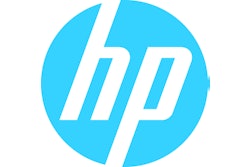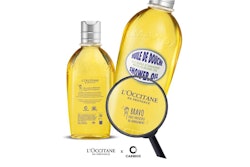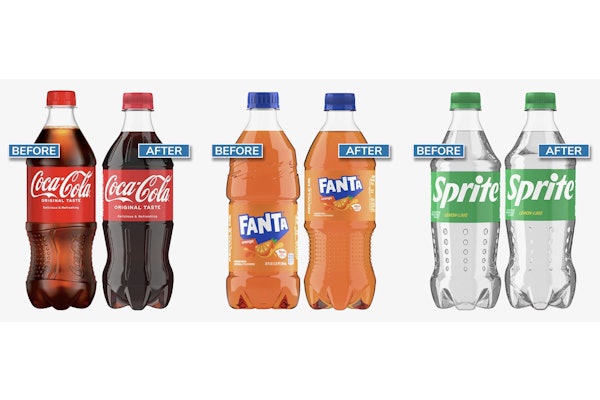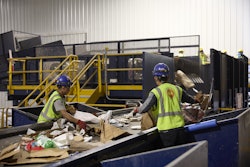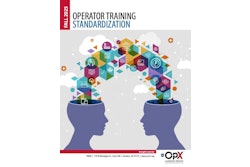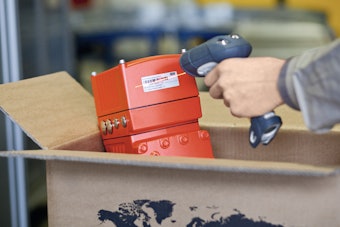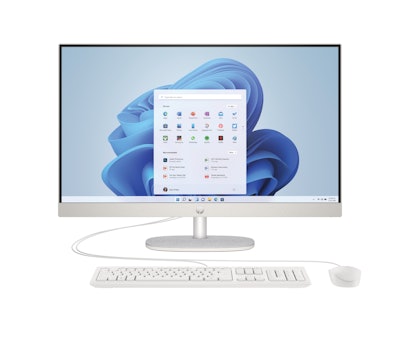
HP is addressing material sustainability and waste savings with its redesigned All-in-One PC packaging.
In 2023 the company released a comprehensive overhaul of the computer line’s packaging, prioritizing the use of the sustainable materials consumers demand, while also rightsizing the packaging to minimize waste and boost transport efficiency.
“It’s no longer just a fashionable thing to be sustainable,” says Darrick Christensen, packaging design and procurement manager at HP. “Everyone wants to contribute to using sustainable materials and minimizing our negative impact on our world.”
HP computer packaging with a sustainable focus
HP’s All-in-One PC combines the traditional tower and monitor into one head unit that serves both functions, and comes with a stand, base, power supply, cord, keyboard, and mouse to complete the setup.
One of the most noticeable changes in HP’s All-in-One PC package redesign is the move away from plastics like expanded polyethylene (EPE), which predominantly made up the legacy packaging.
HP’s packaging is generally discarded after its single use of protecting the product until it reaches the consumer. Knowing this, the company aimed to reduce its environmental impact with a shift toward primarily fiber-based materials.
“Fiber-based materials are one of the most recycled materials on the planet. There are good recycling streams, and we want to see our packaging be recycled and reused in that manner,” explains Christensen. He adds that HP wanted the packaging to be “easily dropped into a recycling bin, so it will have the highest probability of being recycled.”
To accomplish this, HP utilized a combination of recycled corrugated, paperboard, and molded pulp, with a small amount of 90 to 100% recycled EPE foam where necessary.
In all, the new packaging uses around five grams of EPE. That’s around 98% less EPE than the previous 24-in. model’s packaging and about 91% less than the previous 27-in. model.
Also integral to the new packaging’s sustainability credentials is its optimized sizing to reduce waste and boost efficiency in logistics.
“For us, shipping air in our packaging is the great evil,” says Christensen. “We want everything to be as efficient as possible, while of course utilizing sustainable materials.”
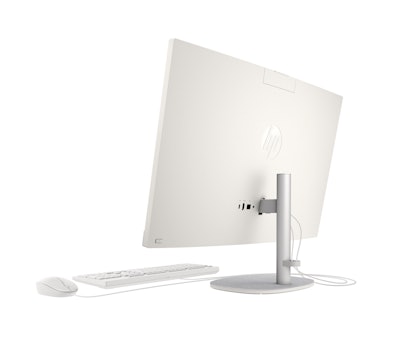 The All-in-One PC's stand now detaches from the head unit, allowing for a reduced package size.HP
The All-in-One PC's stand now detaches from the head unit, allowing for a reduced package size.HP
As a result, the company was able to increase the product’s pallet density by 66% for the 24-in. model, and 133% for the 27-in. model.
 | Read how Amazon uses AI to intuitively right-size packaging. |
Structural details of the new packaging
The PC’s head unit is placed in a non-woven, recycled plastic/polyester PET bag. It is then placed inside a lower cushion tray, made with molded pulp and uniquely designed for product support and protection. HP's molded pulp cushioning protects its various computer products while minimizing the use of expanded polyethylene.HP
HP's molded pulp cushioning protects its various computer products while minimizing the use of expanded polyethylene.HP
The product is then enclosed with a top cushion tray, also made with molded pulp. “On the top tray are areas where we can put the stand base and the stand’s vertical support,” says Christensen.
The enclosed top and bottom trays, an accessory box, and product documentation in a recycled paperboard envelope are sealed into a recycled paperboard sleeve. The sealed unit is then placed in a recycled corrugated outer package.
The sleeve features a handle and a tear strip to allow the consumer to easily remove the product. Graphical instructions guide the consumer on how to remove and open the sealed sleeve.
The accessory box includes a power supply that is protected by a paper sleeve, the cord, and the mouse, which is also protected with a non-woven bag, says Christensen.
The internal structure of the packaging is the same for both e-commerce and retail settings, but the outer packaging changes depending on the setting. “For e-commerce, we’ll use a kraft package with a one-color HP logo on it. For retail, we’ll use a full-color outer package,” says Christensen.
HP’s strategy behind the sustainable push
The new HP computer packaging was guided by a three-pronged approach the company uses for all package development, which is to “eliminate, innovate, and prioritize,” Christensen explains.
As a long-term strategy, the company hopes to “eliminate all sources of plastic and hard-to-recycle materials,” he says. That’s coupled with a goal to “innovate with new non-plastic materials and focus primarily on fiber-based materials.”
 | Read about ASUS's 90% recycled pulp laptop packaging which doubles as a computer stand. |
Finally, the company prioritizes ease of recycling in its designs.
The push away from plastic and toward sustainable packaging is mainly driven by commercial customers, as well as countries and municipalities with heightened sustainability requirements.
“Some of that is coming from requirements for the percent of recycled content and also limiting the use of plastics,” says Christensen.
 Consumer preference toward packaging that uses less plastic motivated HP's packaging material changes.HP
Consumer preference toward packaging that uses less plastic motivated HP's packaging material changes.HP
“Rather than get into the science of that, we understand it. That’s what we’re working on, to focus on what our customers feel is important and valued, which is fiber-based materials, and eliminating all sources of single-use plastics,” says Christensen.
Switching to sustainable materials did come with a new set of challenges though.
Compared to traditional foam packaging development, “it’s become much more of a science to use non-resilient materials such as corrugated paper and molded pulp,” says Christensen. “We have longer development times, and there are higher costs.”
Finding viable and scalable alternatives to plastic films further adds to HP’s and the greater industry’s challenge to boost sustainability.
“Everyone’s looking for this holy grail of alternative materials, and when we find these things, we need to perform a cost and performance evaluation, understanding what’s out there and whether it meets all of our sustainability requirements, without creating new challenges,” Christensen says.
Product protection also remains top priority when searching for sustainable material alternatives. HP faces this challenge with a digital approach: It utilizes simulated drop testing before ever generating samples to do physical drop testing. This allows the company to learn as much as possible about load-bearing areas and cushion performance virtually to reduce overall learning cycles.
This focus on sustainable materials comes at a significantly higher cost when compared to EPE and similar materials, Christensen explains. But HP’s commitment to its sustainability goals drives the company to make these changes.
“I’ve always been very pleased with HP’s focus on minimizing its environmental impact and support these sustainable materials, even though at times they’re more difficult and at times more expensive to use,” Christensen says.
HP’s focus on sustainable packaging solutions is apparent in its new All-in-One PC packaging, meeting consumer demands to cut plastic while also improving efficiency through rightsizing.


